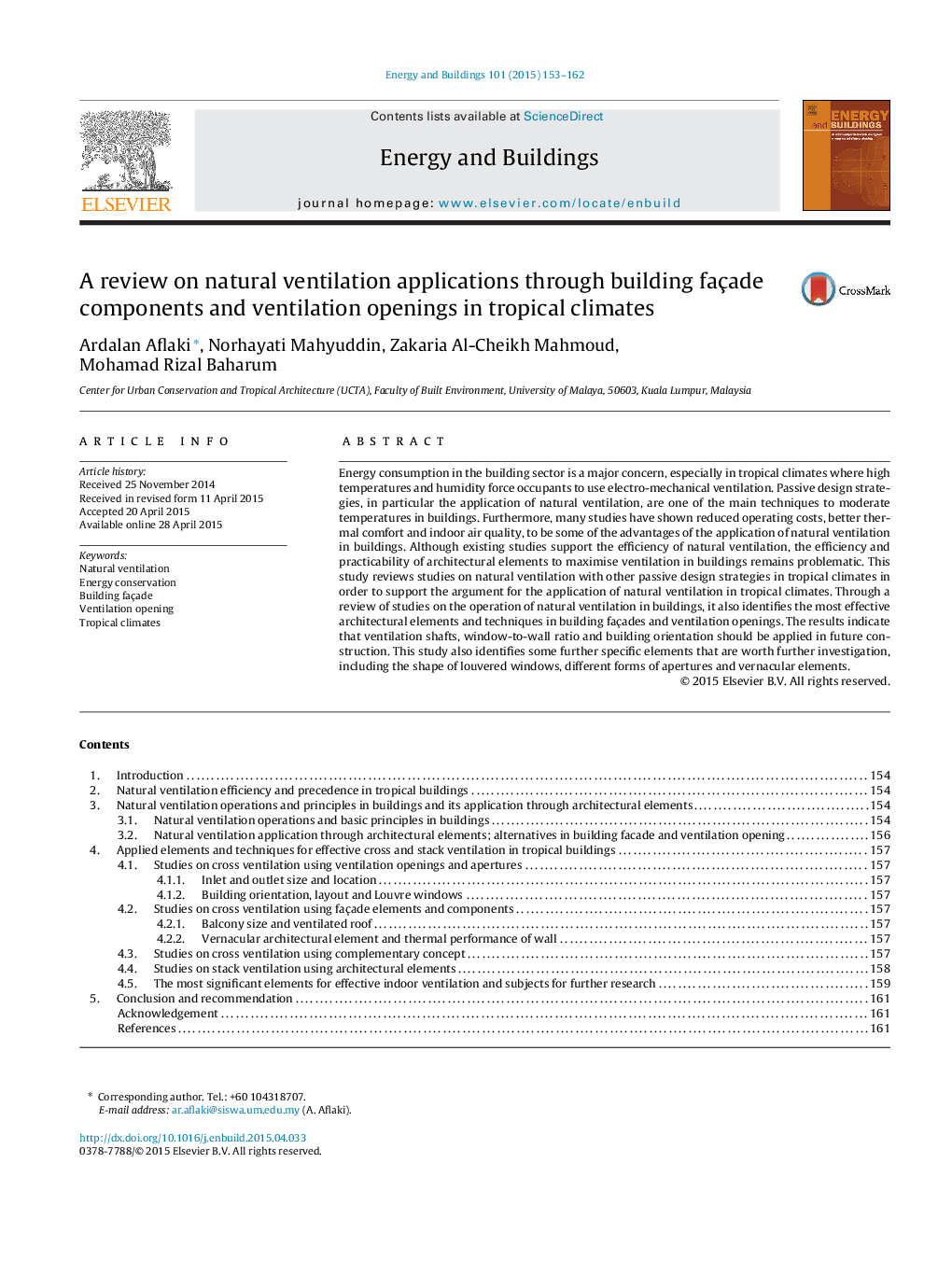| Article ID | Journal | Published Year | Pages | File Type |
|---|---|---|---|---|
| 6731380 | Energy and Buildings | 2015 | 10 Pages |
Abstract
Energy consumption in the building sector is a major concern, especially in tropical climates where high temperatures and humidity force occupants to use electro-mechanical ventilation. Passive design strategies, in particular the application of natural ventilation, are one of the main techniques to moderate temperatures in buildings. Furthermore, many studies have shown reduced operating costs, better thermal comfort and indoor air quality, to be some of the advantages of the application of natural ventilation in buildings. Although existing studies support the efficiency of natural ventilation, the efficiency and practicability of architectural elements to maximise ventilation in buildings remains problematic. This study reviews studies on natural ventilation with other passive design strategies in tropical climates in order to support the argument for the application of natural ventilation in tropical climates. Through a review of studies on the operation of natural ventilation in buildings, it also identifies the most effective architectural elements and techniques in building façades and ventilation openings. The results indicate that ventilation shafts, window-to-wall ratio and building orientation should be applied in future construction. This study also identifies some further specific elements that are worth further investigation, including the shape of louvered windows, different forms of apertures and vernacular elements.
Related Topics
Physical Sciences and Engineering
Energy
Renewable Energy, Sustainability and the Environment
Authors
Ardalan Aflaki, Norhayati Mahyuddin, Zakaria Al-Cheikh Mahmoud, Mohamad Rizal Baharum,
